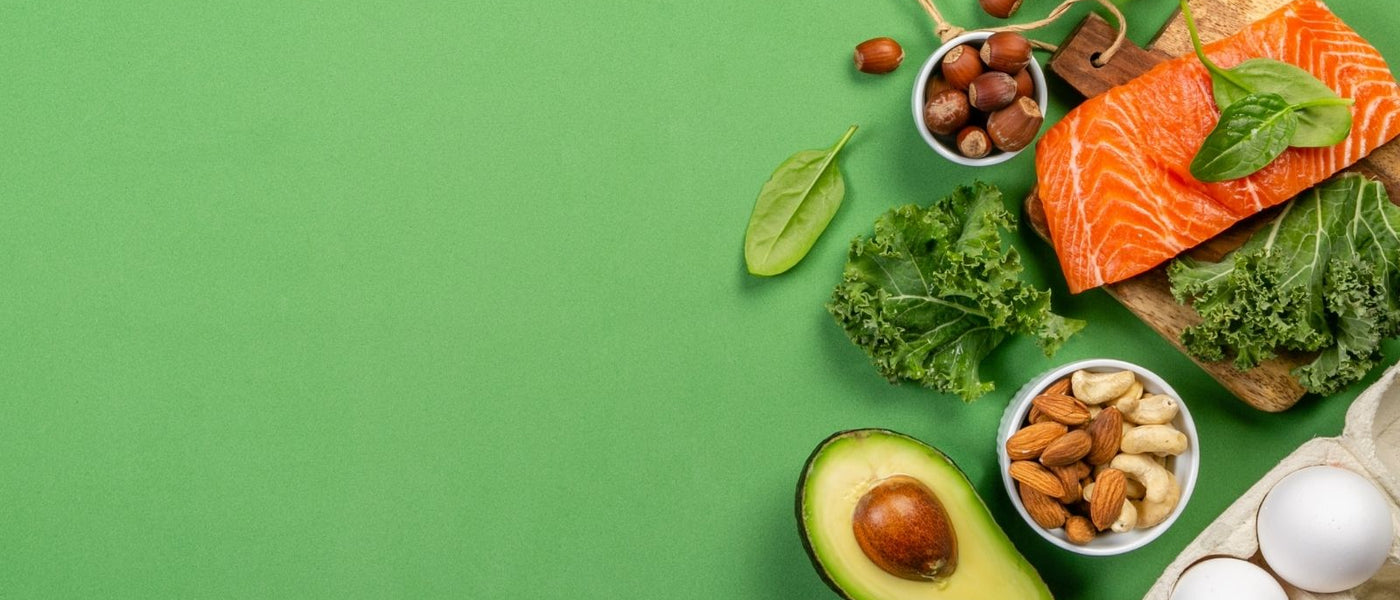
KETO DIET AND THE FASTING-MIMICKING PROGRAM
The keto diet is part of the low-carb diet mainly used to lose weight fast and to trigger the fat burning. Keep reading the article to find out more about it, its characteristics, and an example of a keto diet plan.
What is a keto diet?
The keto diet is a nutritional strategy based on the reduction of sugars, which "obliges" the organism to produce autonomously the glucose necessary for survival and to increase the energy consumption of fats contained in the adipose tissue. Keto diet means "diet that produces ketone bodies" (a metabolic residue of energy production from fats).

Ketone bodies are regularly produced in minimal quantities; they are easily disposed of with urine and pulmonary ventilation. During a keto diet, they reach a higher level than the normal condition. The high amount of ketone bodies is actually called ketosis. The presence of ketone bodies in the blood has several effects on the body; some are considered useful in the process of slimming, others are "collateral" types.
There is no single type of keto diet, all food styles providing less than the necessary amount of calories, carbohydrates, and sometimes protein may trigger the ketosis process. Some types of keto diet are used in the clinical field (for example against drug-free epilepsy, severe obesity associated with certain metabolic diseases, polycystic ovary syndrome (PCOS), etc.), but these are systems mainly exploited in the field of fitness and aesthetic culture.
Characteristics of the keto diet
The keto diet is a nutritional scheme:
- Often low-calorie (low-calorie diet)
- Low in carbohydrates (low carb diet)
- Normal or high protein content, although the absolute amount (in grams) is more often than medium
- A high content of lipid.
Keto diet in the FMD?
By varying from person to person, the ProLon 5-day Fasting Mimicking Diet also contributes to ketosis initiation. In fact, around at the 2nd or 3rd day, fat-burning ramps up, contributing to the initiation of ketogenesis. By the end of this day, ketosis may occur* until the last day. (*It may vary from person to person). If you want to approach a low sugars diet that is not too long, try it now. Buy ProLon now.

How does a keto diet work?
The mechanism of the keto diet is based on the reduction of calories and carbohydrates that, in combination with a right level of protein and a high percentage of fat, should improve lipolysis and cell lipid oxidation, then total fat consumption by optimising weight loss. The production of ketone bodies, which must be controlled, has the function of moderating the appetite stimulation - because of their anorexizing effect.
Keto diet plan
- Reduction of simple and complex carbohydrates: foods containing carbohydrates must be eliminated (even if this is practically impossible). The portions of vegetables are maintained, which contain fructose, causing the percentage collapse of complex carbohydrates in favour of the simple ones (but remember to be quantitatively very low). These nutrients are the primary fuel of the body and reducing them "to a minimum" forces the body to dispose of excess fat reserves; besides, carbohydrates are nutrients that significantly stimulate insulin (anabolic hormone and fattening), which is why their moderation should also take on an important metabolic significance.
- Quantitative increase and percentage (therefore absolute) of fats, and only percentage of proteins, keeping the caloric intake constant. After eliminating carbohydrates, the portions of protein foods should be kept constant, while at the same time increasing only the quantities of foods with a high-fat content (oils, oilseeds, fleshy oily fruits, etc.). In theory, this compensates for the caloric reduction of the carbohydrate deficit thanks to the greater amount of lipids. It should be however specified that many amino acids are glucogenic (they are converted into glucose for glucogenesis) and have a metabolic action similar to food carbohydrates, partially nullifying the effect on lipolytic enzymes and the production of ketone bodies.

To sum up:
- Avoid all kinds foods that may include hidden sugars such as fruit juice, which contain 90% added sugar and only 10% pulp. Also, pay attention to the sugars contained in candies, chewing gum, medicines, supplements, sauces, and balsamic vinegar. Other foods to be excluded or restricted in a keto diet are all legumes and cooked carrots (which can be ingested only in small quantities, if raw), bananas, pineapples, apples, mango, cereals, potatoes, and their derivatives.
- Free consumption of all leafy vegetables is allowed. Yes to salad, broccoli, zucchini, spinach, cardoon, cauliflower, fennel, pumpkin flowers, radicchio, celery, green peppers, radishes, turnip tops. Yes to animal proteins like fish. Tomatoes, pumpkin, artichokes, green beans, aubergines, red and yellow peppers, asparagus, leeks, and onions can be consumed but with due moderation. Yes to oily-dried fruit (almonds, nuts and more), but to be consumed in moderate quantities.
It is recommended to follow a keto diet under medical supervision or by your nutritionist. It does not hurt but may not be recommended for people with liver and kidney problems, or other diseases such as diabetes type I. For any nutritional support and for many questions, take advantage of a free nutritional consultation from our nutritionists (a 50-euro-value). Select the date and time you prefer, and get in touch with our knowledgeable nutritionists.
